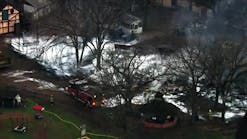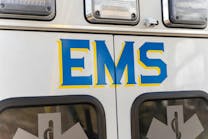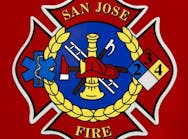Introduction
Incident Management (or Incident Command) is a system of terminology and organization that provides management tools for responding to and operating at disasters. This system is very similar to the organizational and management tools used daily in business and industry. In essence, Incident Management is "Management 101."
History
In the 1970's, California (U.S.) resources were severely taxed by major wildfire outbreaks. These incidents required the cooperation of multiple agencies that did not usually work together. Many agencies competed for supplies and equipment in a resource scarce environment. The California experience revealed several key findings:
- There was no clear cut & identifiable leader or Incident Manager
- There was no basic organizational structure for chain of command and span of control
- There was no common terminology
- There was no communications system
- There was no system for allocating resources
A group of aerospace engineers were commissioned to develop a system that could resolve the major issues of coordination and resource allocation in a wildfire or disaster event. The product was originally called the Incident Command System (ICS). In recent years the name has been changed to the Incident Management System or IMS. The change evolved because the word "management" is more descriptive of the system and its process as opposed to the word "command".
The original system was designed in the United States for wildland fire operations, and was adopted in the 1980's by the U. S. urban fire service. System evolution continued in the 1990's when other functional agencies realized that IMS could be used for any type of disaster. There are many examples of the flexibility that IMS brings a disaster response organizations' as indicated by the following incidents in the United States:
- Major hurricanes including, Andrew, Opal and Marilyn
- Complex wildfire operations
- Preparedness and resources in the 2002 SLC Olympics
- A meningitis outbreak
- Major west coast earthquakes (U.S.)
- Special Events such as sporting engagements
- The New York ice storm
- Major flood events
- Terrorist Incidents in the US
In each case, IMS worked well. It provided a management boilerplate for diverse agencies such as the Public Health, Emergency Medical Services (EMS), Fire, Law Enforcement, Public Works, NGO's and hospitals to work together. In essence, agencies were able to respond from many states and yet communicate and coordinate.
The Essence of IMS
The Incident Management System is based on five basic elements. There is an Incident Manager (with a management staff) that coordinates Operations, Logistics, Planning and Finance & Administration
Incident Manager - responsible and accountable for all aspects of the incident or events, directly responsible for all sectors not delegated. In a disaster, the head of the government emergency management agency might be the equivalent of an Incident Manager.
Operations - the tactics and/or tasks needed to accomplish assigned objectives. In the disaster arena operations functions would include fire/rescue, law enforcement, public works, mass feeding and sheltering, public health, and emergency medical care.
Logistics - supports all elements in the IMS such as equipment, supplies, communications, food/water, and facilities. In a disaster outbreak, logistics functions may include several states (similar to wildfire operations).
Planning - devises long and short-term plans, maintains status boards, and tracks resources. Planning is responsible for documenting and displaying reconnaissance/surveillance information and tracking all resources committed to a disaster.
Administration/finance - keeps workers' comp, personnel records, payroll and finance records. Financial tracking of all related expenditures by government and local agencies is a major facet in the management of a disaster event.
The IMS system is like a business or government agency organizational chart. The only difference is the terminology. There is a manager and a management staff that coordinates and directs a disaster outbreak (Incident Manager). There are support personnel that ensure materials; medications and supplies are adequate during a disaster siege event (Logistics Section). Other people plan operational periods, and track critical resources (planning section). Lastly, administration personnel keep records, purchase equipment and supplies, and document agency expenditures al all levels.
The Management Staff
The Incident Manager is responsible for all functions in the IMS that are not delegated. Because of staffing limitations at local levels, the Incident Manager will have many functions in addition to direct supervision.
In a fully staffed IMS, the Incident Manager has a management staff. The Management Staff consists of a liaison officer, safety officer, and public information officer. The management staff duties are:
Liaison officer - point of contact for outside agencies; monitors operations to identify potential inter-organizational problemsInformation officer- responsible for the formulation and release of information to the media; organizes and conducts media briefings; coordinates media releases with government and other operational agencies or organizations.
Safety officer - the safety officer monitors all facilities and operations to ensure safe procedures; the safety officer has the authority to immediately halt any procedures, operations, or tasks that present a hazard to medical or other personnel. ( Note: The safety officer position is mandated by U.S. federal safety requirements.) A safety officer should be appointed at the pre-deployment stage. An Incident Manager should not attempt to perform safety officer functions.
Operations Section
Operational task functions in a disaster are supervised by the Operations Section Chief (often called Ops). Disaster operations include extrication, triage, treatment, transport, public health, assessment of the medical infrastructure, medical outreach, mortuary operations, mental health, and sometimes veterinary care.
The Operations Section Chief has a demanding position. The Operations Section must continuously coordinate with the Incident Manager and the Logistics Section. The Operations Section Chief is responsible for staffing in triage & treatment areas and coordinating outreach teams.
Some disaster managers assign operations responsibilities to a physician managing the treatment area. In many cases a separate Ops Chief is appointed who is skilled in management and operational demands of disasters. The choice depends on team preference and the assignment of this position must be based upon the incident management skills and personality of the individual that is selected. (In other words, some physicians are good at operations management; some are not.)
The actual organization of operational units should be coordinated with the Operations Chief and the managers of the various operations agencies. Medical organization will vary considerably depending on the type and impact of a disaster and the assigned disaster mission. These considerations involve a myriad of medical issues beyond the scope of this paper.
The Logistics Section
By definition disasters are resource scarce environments (a high demand - low density logistics scenario). This is especially true in developing countries where sometimes resources can be scarce even during non-disaster periods. Most disaster events have similar characteristics. Major logistics shortages include pharmaceuticals, medical equipment, supplies, communications, shelter, safe food, clean water, transportation vehicles (air and ground) and personnel.
The Logistics Section chief is responsible for the following:
Communications Unit - responsible establishing communications networks and information systems for tactical, regional, and national information services; tracks and maintains communications and information infrastructureFood/Water Unit - responsible for determining food and potable water requirements for patients and medical personnel
Supply Unit - responsible for ordering equipment, personnel, supplies, and medical supplies; stores supplies/equipment and maintains an inventory
Facilities Unit - responsible for the layout and operation of facilities related to the disaster (example tent cities or temporary leased facilities).
Security Unit - responsible for providing safeguards for the protection of response and support personnel, facilities, and property from loss or damage
Ground Support Unit - responsible for auxiliary power, transportation, fueling and maintenance of vehicles and equipment
The Logistics Section Chief must coordinate their activities with the Incident Manager, the Operations Section Chief, and the Planning Section Chief. Additionally, the Logistics Section must maintain a continuous liaison with all units for supply and equipment ordering.
Unfortunately medical professionals do not fully appreciate the importance of logistics until they are confronted with a high demand low-density environment. A disaster response team requires at least one logistics person per five team members (rule of thumb). For example, a thirty person medical team will require at least six logistics personnel for a total of thirty-six team members. There are periods in a deployment when an entire team is involved in logistics functions such as mobilization, tent erecting, vehicle loading or unloading, and de-mobilization.
During a disaster logistics functions are critical at every level. The highest level is national in scope and involves major transportation and appropriations issues. Most likely a government disaster declaration will be in force. On the local or regional level, the emergency response infrastructure will require robust logistical support.
Communications and Information
In the IMS structure, the Communications Unit is assigned to the Logistics Section. Many operational and logistics functions require effective communications and information services. These functions include government agency coordination, coordination with local agencies, supply ordering, EMS transport functions (air and ground), and disaster team coordination. Communications and information specialists must track equipment, and implement appropriate networks and infrastructure for voice/data communications. The communications unit also maintains and updates the Incident Communications Plan (ICS form 205).
The Planning Section
The Planning Section Chief is responsible for the collection, evaluation, dissemination and use of information about the development of the incident. A key function in a disaster is the receiving and display of information. The planning section also tracks all resources utilized and displays critical information regarding the status of the incident.
The Planning Section Chief coordinates with the Incident Manager and the other section chiefs in the preparation of the daily incident action plan (IAP). An IAP is prepared at the national level, and the regional/local level. The IAP is a written document using ICS Form 201 (Incident Briefing). The planning section also maintains Organization Assignment List (ICS Form 203) and the Incident Organization Chart (ICS Form 207).
An important duty of the Planning Section Chief is the development of the daily incident action plan briefing. The daily briefing consists of strategy and missions, threats to responders, weather, safety issues, and any relevant information relating to the team activity for the briefing cycle. Daily briefings occur at each level in the IMS from the federal level down to individual teams or facilities.
Resources Unit - maintains check-in list of all resources; prepares and maintains all resource status information by using Resource Status Cards (ICS Form 219 called "T" cards)Situation Unit - collects and organizes situational and medical surveillance information; maintains display boards of key information such as weather, safety issues, shift schedule, etc.
Document Unit - maintains and stores incident files and provides duplication services
Demobilization Unit - assists the Incident Manager and the Logistics Section chief in the development of the team demobilization plan and checkout procedures.
Technical advisor - individual(s) with special knowledge or expertise relating to the incident (ex. epidemiologists, weather specialists, immunologists, etc.)
The Administration/Finance Section
This position is commonly referred to as the Admin Chief. Administration & Finance has implications that are national in scope in a major disaster. These issues affect local IMS structures. The resource scarce environment mentioned previously creates an intense finance and purchasing environment.
The Admin. Section Chief is responsible for the maintenance of all records and files relating to a deployment. The responsibilities of the admin section include:
Time Unit - compiling information on dates and hours worked by personnel.Compensation Claims Unit - responsible for recording and submitting workmen's compensation claims or other claims relating to the disaster.
Cost Unit - responsible for collecting all cost data and providing cost estimates and cost saving
Procurement Unit - responsible for administering all financial matters pertaining to all vendor contracts
IMS Staffing Issues
Where do we get the people to staff the various IMS positions? This is a valid question, especially at the local levels. Obviously, a major event severely taxes staffing. There are several answers to the question of staffing:
- The units described in the previous pages may be used only when needed.
- The IMS units are functions, not people. Management personnel can perform more than one function.
- The Incident Manager automatically assumes all duties not assigned. (This is a primary IMS rule) Incident Managers need to be creative in delegation.
- The Principle of Branches
In a disaster management system, the concept of span of control is important. Span of control is the number of people that a single supervisor can successfully manage and coordinate. Business management texts suggest five to seven people as an effective span of control. In tactical operations, three or four people is a realistic span of control.
Consider a disaster that is discovered in a single locale, but expands into several states. At the national level, the span of control begins to expand to criticality. The disaster event needs to be branched at this point.
A Branch is the organizational level having functional or geographical responsibility for major parts of incident operations. The branch level is between section and division in the Operations Section, and between section and unit in the Logistics Section. (Branches are indicated by Roman numerals).
In a national level event, branches could be regions of a country or region such as northwest (branch I), southwest (branch II) etc. For span of control purposes, branches can be any geographical designation in a complex incident.
The Principle of Divisions
A Division is defined as a unit of operation designed to divide an area into geographical sectors. Divisions can be designated by a letter (A,B,C, etc.) or be named (St. Thomas division or south division).
For example, in a regional disaster with three events, the Operations Section would coordinate with three different locations (a span of control of three). If medical operations expanded to six events, the span of control is too wide. In this case, the incident is divided into two divisions: division A and division B. Three events are assigned to each division. Now the Operations Section Chief is managing two division leaders (Divisions A and B). The division leaders each manage three events. At each layer, the span of control is three or less.
Divisions are the next organizational level below branches. Using a previous example, the northwest (branch I) could be divided in city A (division A), City B (division B) etc.
The Division concept is also important at the team level. An agency may be assigned to operate at more than one location. To maintain organization, the separate locations are each designated as a division. Medical operations are almost always divided into a triage sector, treatment sector and transport sector. Fire operations are divided into fire suppression/rescue, hazardous materials operations, and mass casualty operations.
Strike Teams and Task Forces
Strike Teams and Task Forces are organizational tools that provide flexibility when there are multiple missions. A Strike Team is a specified combination of the same type of resources with common communications and a leader. A five person medical team is an example of a strike team. A Task Force is a specified combination of unlike resources with common communications and a leader. A task force example is three nurses, an EMS unit, and a law enforcement unit assigned to work as a unified group.
The following examples demonstrate the use of strike teams or task forces:
- A Disaster Medical Assistance Team (DMAT) is deployed for medical treatment operations. The Operations Section Chief requests a medical needs assessment at a distant location. The DMAT Unit Commander identifies an assessment strike team and assigns the mission.
- During DMAT operations, information is received about a large number of possible patients at an impromptu shelter in Jones High School. A task force is assigned consisting of two paramedics, one nurse, a fire/rescue unit, and a security officer.
- The task force at Jones High School reports that there is a significant and long-term medical mission. The DMAT Unit Commander assigns additional personnel to supplement the task force and establishes a division (called Jones Division).
IMS Forms
A common belief in disaster operations is that forms and paperwork are not important because we are too busy. IMS forms are an exception. The U.S. Incident Management System is based on a series of practical scene management forms. (Many of these forms are generic. Some are specific to the wildland fire fighting community but are easily adapted for use in other organizations.) The forms are very useful as a tactical checklist. Key items in the forms that are blank trigger a warning to on-scene managers to get the proper answers. For example, the Incident Objectives Form (202ICS) requires a weather forecast and safety objectives. The forms serve as an excellent guideline for preparing an incident action plan and daily briefing. The forms also serve as a source of archived information for financial reports and after-action reports. (See case study)
IMS forms are brief, concise and can be filled out in a manner of minutes by the appropriate section chief or unit leader. IMS forms can be downloaded (Adobe format) at http://www.nwcg.gov/pms/forms/icsforms.htm. The printed forms can also be ordered for nominal cost from:
- National Interagency Fire Center
- National Wildfire Coordinating Group
- Catalog Part 2: Publications (NFES #3362)
- Great Basin Cache Supply Office
- 3833 S. Development Avenue
- Boise, ID. 83705
The forms most applicable to disaster operations are:
- ICS 201 - Incident Briefing NFES 1325
- ICS 202 - Incident Objectives NFES 1326
- ICS 203 - Incident Assignment List NFES 1327
- ICS 204 - Division Assignment NFES 1328
- ICS 205 - Incident Radio Communications Plan NFES 1330
- ICS 206 - Medical Plan NFES 1331
- ICS 207 - Organization Chart NFES 1332
- ICS 211 - Check-in List NFES 1335
- ICS 214 - Unit Log NFES 1337
- ICS 215A - Incident Safety Analysis NFES 2221
- ICS 220 - Air Ops Summary NFES 135
Glossary:
Administration/finance - keeps workers' comp, personnel records, payroll and finance records: supervises all units in the administration/finance section.Branch - organizational level having functional or geographical responsibility for major parts of incident operations; branch level is between section and division in the Operations Section, and between section and unit in the Logistics Section. (Branches are indicated by Roman numerals).
Communications unit - responsible establishing communications networks for tactical, regional, and long distance communications; tracks and maintains communications equipment.
Compensation / claims Unit - responsible for recording and submitting workmen's compensation claims for or other claims relating to a deployment.
Cost Unit - responsible for collecting all cost data and providing cost estimates and cost saving.
Demobilization unit - assists the Incident Manager and the Logistics Section chief in the development of the team demobilization plan and checkout procedures.
Division - unit of operation designed to divide an area into geographical sectors; called a sector in urban fire service terminology.
Document unit - maintains and stores incident files and provides duplication services.
Facilities unit - responsible for the layout and operation of facilities.
Food/water unit - responsible for determining food and potable water requirements for personnel.
Ground support unit - responsible for auxiliary power, transportation, fueling and maintenance of vehicles and equipment.
Incident command system - see incident management.
Incident management (or incident command) is a system of terminology and organization that provides management and coordination in a disaster, event, or incident.
Incident Manager - responsible and accountable for all aspects of the incident or events, directly responsible for all sectors not delegated.
Information officer - responsible for the formulation and release of information to the media; organizes and conducts media briefings; coordinates media releases with government agencies.
Liaison officer - point of contact for outside agencies; monitors operations to identify potential inter-organizational problems.
Logistics - support of all elements in the IMS such as equipment, supplies, communications, food/water, and facilities; supervises all units in the Logistics Section.
Management staff - directly supports the Incident Manager; consists of a liaison officer, safety officer, and public information officer.
Operations - the tactics and/or tasks needed to accomplish assigned objectives for medical care and public health; supervises all units in the Operations Section.
Planning - devises long and short term plans, maintains status boards, and tracks resources; supervises all units in the planning section.
Procurement Unit - responsible for administering all financial matters pertaining to all vendor contracts.
Resources Unit - maintains check-in list of all resources; prepares and maintains all resource status information by using Resource Status Cards (ICS Form 219 called "T" cards).
Safety officer - the safety officer monitors all facilities and operations to ensure safe procedures; the safety officer has the authority to immediately halt any procedures, operations, or tasks that present a hazard to personnel.
Security unit - responsible for providing safeguards for the protection of personnel, facilities, and property from loss or damage.
Situation Unit - collects and organizes situation information; maintains display boards of key information such as weather, safety issues, shift schedule, etc.
Span of control - number of people that a single supervisor can successfully manage and coordinate.
Strike team - a specified combination of the same type of resources with common communications and a leader.
Supply unit - responsible for ordering equipment, personnel, supplies, and medical supplies; stores supplies/equipment and maintains an inventory.
Task force - a specified combination of unlike resources with common communications and a leader.
Technical advisor - individual(s) with special knowledge or expertise relating to the incident (ex. Epidemiologist, weather specialist, etc.).
Time Unit - recording the dates and hours worked by all team members, and the submissions of these records for payment.
References:






